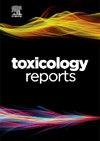A review of the sidelined pollutant: Reviving the fight against heavy metal contamination in an era of emerging contaminants
Q1 Environmental Science
引用次数: 0
Abstract
Groundwater contamination by heavy metals (HMs) remains a pressing global concern, presenting substantial risks to humans, animals, plants, and the environment. Although emerging pollutants have received increasing attention, the adverse impacts of HM have not been adequately resolved. This comprehensive review examines the current state of knowledge regarding HM in groundwater, addressing sources, global trends, transport, fate, sampling techniques, modeling, quality control, toxicity, treatment, sustainable measures, and vital research gaps. HM research has continued to dwindle since 2022, these chemicals infiltrate groundwater systems through various pathways, and their mobility and bioavailability are affected by changes in climate, geological heterogeneity, and chemical properties. Moreover, HM may interact with other emerging contaminants to enhance migration and toxicity; however, little or no research has been conducted to fully understand cocktail migration mechanisms and impacts in groundwater systems. Despite the existence of various treatment techniques, no single approach has been universally accepted as the sole solution for completely removing HM from drinking water systems. There is a pressing need for standardized and advanced sampling methods, stringent quality control measures, and the incorporation of cutting-edge technologies such as smart water sensors that can detect both charged and uncharged contaminants, and nanotechnology for effective management. The increasing toxicity of HM and their harmful effects on human health and ecosystems emphasize the need for continuous and novel research involving sustainable remedial strategies, as the battle against metal contamination in groundwater systems requires constant dedication, innovative research, and a shared commitment to protecting our environment.
次要污染物的回顾:在新兴污染物时代重振与重金属污染的斗争
地下水重金属污染仍然是一个紧迫的全球问题,对人类、动物、植物和环境构成重大风险。虽然新兴污染物受到越来越多的关注,但HM的不利影响尚未得到充分解决。这篇全面的综述审查了地下水中HM的知识现状,解决了来源、全球趋势、运输、命运、采样技术、建模、质量控制、毒性、处理、可持续措施以及重要的研究空白。自2022年以来,HM研究持续减少,这些化学物质通过各种途径渗入地下水系统,其流动性和生物利用度受到气候、地质异质性和化学性质变化的影响。此外,HM可能与其他新出现的污染物相互作用,增强迁移和毒性;然而,很少或没有研究充分了解鸡尾酒在地下水系统中的迁移机制和影响。尽管存在各种处理技术,但没有一种方法被普遍接受为从饮用水系统中完全去除HM的唯一解决方案。目前迫切需要标准化和先进的采样方法、严格的质量控制措施,以及结合尖端技术,例如可以检测带电和不带电污染物的智能水传感器,以及用于有效管理的纳米技术。HM日益增加的毒性及其对人类健康和生态系统的有害影响强调需要持续和新颖的研究,包括可持续的补救策略,因为与地下水系统中的金属污染作斗争需要不断的奉献,创新的研究和共同的承诺来保护我们的环境。
本文章由计算机程序翻译,如有差异,请以英文原文为准。
求助全文
约1分钟内获得全文
求助全文
来源期刊

Toxicology Reports
Environmental Science-Health, Toxicology and Mutagenesis
CiteScore
7.60
自引率
0.00%
发文量
228
审稿时长
11 weeks
 求助内容:
求助内容: 应助结果提醒方式:
应助结果提醒方式:


